Lichens
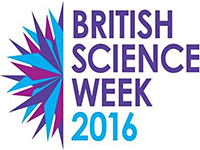 Pam Hamer
Pam Hamer
Lichens are unusual organisms because they are a combination of 2 species, a fungus with either an alga or a cyanobacterium, a relationship called symbiosis. They can grow on almost any surface, and they live in a wide range of environments.
You don’t have to travel far to see lichens; these are on a wall by the front door of our house.
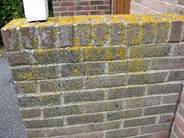
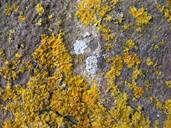
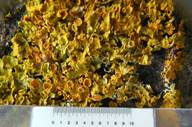
Lichens on a wall
Lichens can take ages to grow so you don’t want to damage them, and as they are outside, you have to be creative to examine them properly. I use a simple magnifier with a magnification of about ×8–×10 or one of the little pocket microscopes from the Natural History Museum if I want to see more (×20–×40).
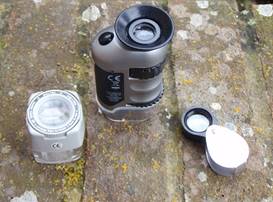 Hand lens, NHM Microscope and lichens
Hand lens, NHM Microscope and lichens
The common bright orange lichen called Xanthoria parietina is easy to see and is really interesting. It is a leafy shape (foliose) and usually has very distinct fruiting bodies visible. These look a bit like little ‘lemon curd tarts’. If you have a lot of these it will not hurt the lichen to cut one off to look at it in more detail. Cut it in half so that you can see the structure within the fruiting body. Lichen are a combination of an alga and a fungus and in this cut section you can see the green algal particles and the fungal fibrous mass. Scientists identify the more difficult lichens by inspecting the spores. These are in the fruiting body and you can see them by cutting a thin slice of the fruiting body, squashing it gently on a microscope slide, then adding a drop of water and a cover slip. You then have to use a good microscope to see the spores, and you may need to add a stain to examine them properly.
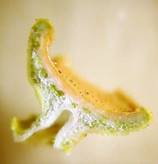
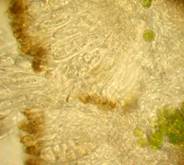
Slice of lichen (left), spores of lichen (right)
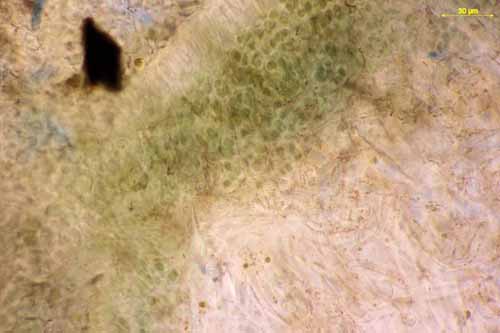 Peltigera lichen, with cyanobacteria stained with lactophenol cotton blue
Peltigera lichen, with cyanobacteria stained with lactophenol cotton blue
Once you get interested in lichens you want to spend more time looking for the less obvious ones. Again you need to use a magnifier and look at different surfaces; church tombstones are good, or twigs off trees. The Field Studies Council produces a number of simple fold out charts to help you identify the lichens. Sometimes you may need to use a more comprehensive book such as that written by Frank Dobson (Lichens: An Illustrated Guide to the British and Irish Species). The British Lichen Society has a good list of publications.
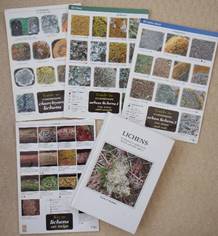 Lichen identification aids
Lichen identification aids
As books are heavy and you are probably looking at lichens when walking outside, it is often easier to make a note of the lichen, photograph it in situ and then check the identification later. I often take photos by holding my camera above my simple magnifier or microscope, though a good macro camera system is much easier to use.
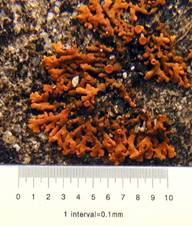
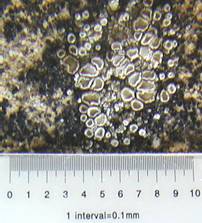
Lichens with scales
We often see lichens on Club excursions, and they look great under a stereomicroscope because they are colourful and 3-dimensional. Here are some that have been photographed with a macro lens on a digital SLR camera:
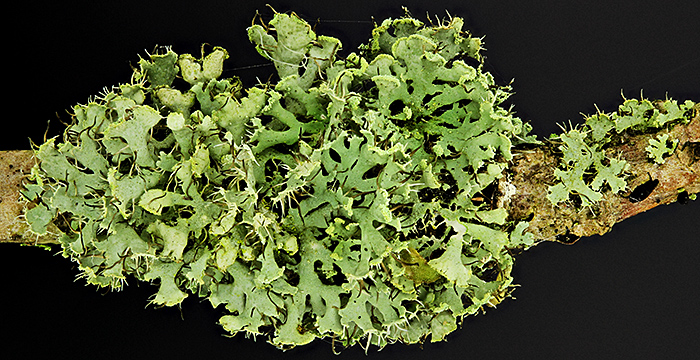 Green lichen on an oak twig
Green lichen on an oak twig
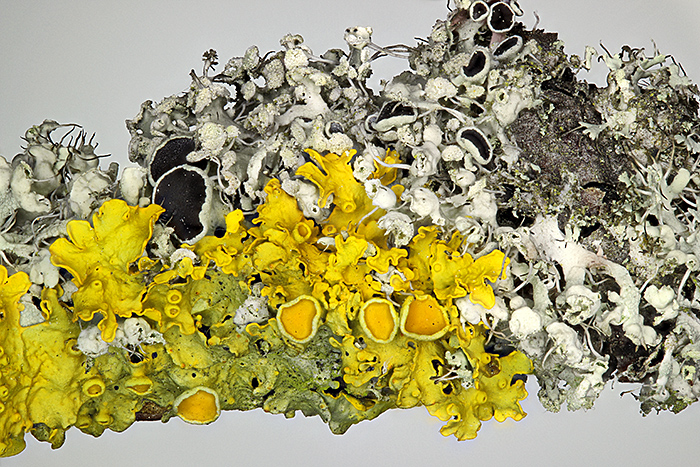 Grey and yellow lichens on a pear twig
Grey and yellow lichens on a pear twig
And if you are really talented, like Christina Brodie who used to exhibit at our meetings, you can try your hand at painting lichens:
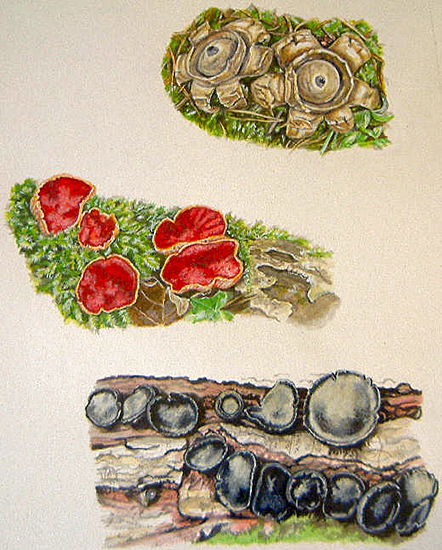
- Find out more about lichens on Wikipedia

